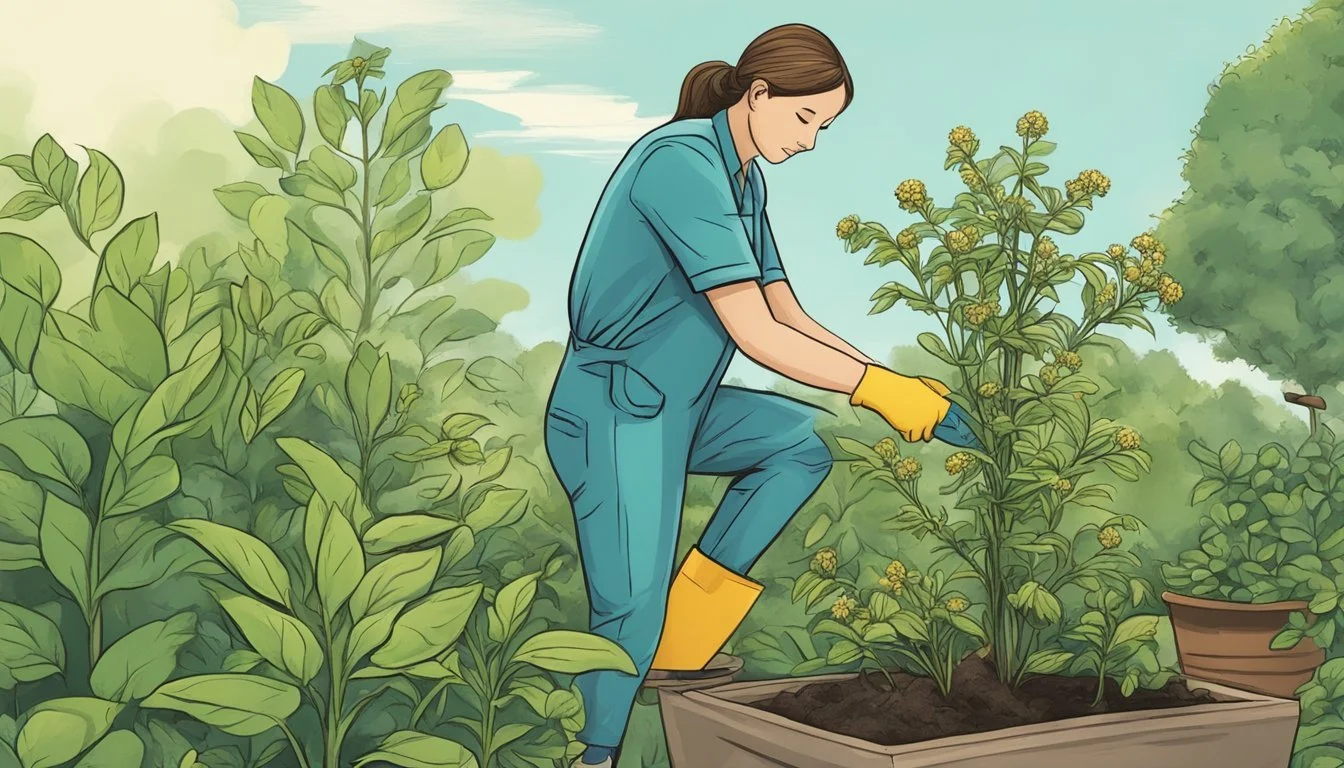Spotting the Signs: Common Toxic Relationship Scenarios You Should Know
Toxic relationships can wreak havoc on mental health and well-being. These harmful dynamics often involve patterns of criticism, manipulation, lack of support, and emotional abuse that erode self-esteem over time. Recognizing toxic relationship scenarios is crucial for protecting one's emotional health and fostering healthier connections.
Unlike healthy relationships built on mutual respect and support, toxic partnerships leave individuals feeling drained, anxious, and devalued. Common toxic behaviors include constant criticism, controlling actions, dismissing feelings, and unpredictable mood swings. These negative patterns create an environment of stress and instability.
Identifying the difference between toxic and healthy relationship behaviors empowers people to set appropriate boundaries. Healthy relationships involve open communication, mutual trust, and respect for each other's independence. By learning to spot red flags early, individuals can make informed choices about the relationships they cultivate and maintain their sense of self-worth.
Understanding Toxic Relationships
Toxic relationships can deeply impact emotional well-being and personal growth. They often involve harmful behaviors that erode self-esteem and create an unhealthy dynamic between partners.
Defining Toxic Relationships
Toxic relationships are characterized by persistent negativity, lack of support, and emotional harm. They can occur in romantic partnerships, friendships, or family connections. Key elements include:
Constant criticism or belittling
Lack of respect for boundaries
Excessive control or possessiveness
These relationships often leave individuals feeling drained, anxious, or depressed. Partners may struggle with low self-worth and find it difficult to trust others.
Types of Toxic Relationships
Several types of toxic relationships exist, each with unique challenges:
Codependent: One partner sacrifices their needs to meet the other's demands
Narcissistic: One partner exhibits extreme self-centeredness and lack of empathy
Abusive: Involves physical, emotional, or verbal abuse
Enabling: One partner supports the other's destructive behaviors
Some toxic relationships combine multiple types, creating complex and damaging dynamics.
Toxic Behavior and Red Flags
Recognizing toxic behaviors early can help individuals avoid or address harmful relationships. Common red flags include:
Gaslighting: Manipulating someone to doubt their own perceptions
Stonewalling: Refusing to communicate or engage in conflict resolution
Jealousy and possessiveness: Excessive monitoring or controlling behavior
Emotional blackmail: Using guilt or threats to manipulate
Silent treatment: Withdrawing affection or communication as punishment
These behaviors often escalate over time, creating a cycle of abuse and reconciliation. Awareness of these signs can empower individuals to seek help or leave toxic situations.
Impact on Individual Well-being
Toxic relationships can severely damage a person's mental and physical health. The effects often extend beyond the relationship itself, impacting various aspects of life and overall functioning.
Emotional and Psychological Effects
Toxic relationships frequently lead to anxiety, depression, and low self-esteem. Victims may experience constant stress and emotional distress, feeling trapped or powerless.
Emotional abuse and manipulation can erode self-worth over time. Individuals may struggle with self-doubt and difficulty trusting others.
Negative emotions like anger, fear, and sadness become more frequent. Some people develop symptoms of post-traumatic stress disorder (PTSD).
Toxic dynamics can impair decision-making abilities and cause social withdrawal. Many victims isolate themselves from friends and family.
Physical Health Consequences
The stress from toxic relationships can manifest in physical symptoms. Headaches, digestive issues, and chronic pain are common complaints.
Sleep disturbances often occur, leading to fatigue and weakened immune function. This increases susceptibility to illnesses and infections.
High stress levels may contribute to cardiovascular problems like high blood pressure. Inflammation in the body can also increase, potentially worsening existing health conditions.
In cases of physical abuse, injuries range from bruises to severe trauma. Victims may delay seeking medical care due to fear or shame.
The Dynamics of Abuse and Control
Abusive relationships often involve complex patterns of control, manipulation, and emotional harm. These dynamics can erode self-esteem and create an environment of fear and instability.
Patterns of Coercion and Control
Controlling behaviors form the core of abusive dynamics. Abusers may dictate their partner's choices, finances, or social interactions. They often use threats, intimidation, or guilt to maintain power.
Manipulation tactics can include gaslighting, where the abuser denies or distorts reality to make the victim doubt their own perceptions. This creates confusion and dependency.
Abusers may also employ unpredictable mood swings or explosive anger to keep their partners off-balance and compliant.
Blame and Criticism Dynamics
In toxic relationships, blame and criticism become weapons. Abusers often shift responsibility for their actions onto their partners, creating a cycle of self-doubt.
Constant criticism can chip away at the victim's self-worth. Even small mistakes or perceived flaws become targets for harsh judgment.
This dynamic creates an atmosphere where the victim feels they can never measure up, reinforcing the abuser's control.
Isolation and Dependency
Abusers often work to isolate their partners from friends, family, and support systems. This tactic increases the victim's dependence on the abuser.
They may discourage outside relationships, monitor communications, or create conflicts with loved ones. Financial control can further trap victims, limiting their ability to leave.
Over time, this isolation can lead to codependency, where the victim feels unable to function without the abuser. Breaking free often requires seeking professional help to rebuild autonomy and self-esteem.
Identifying and Communicating Boundaries
Setting clear boundaries and addressing toxic communication patterns are essential for maintaining healthy relationships. These skills help individuals protect their well-being and foster respectful interactions.
Boundary Setting
Boundary setting involves defining personal limits and communicating them effectively. Individuals should identify their physical, emotional, and mental boundaries. This process requires self-reflection to understand one's needs and comfort levels.
When setting boundaries, it's important to be clear and specific. Using "I" statements can help express boundaries assertively without blaming others. For example: "I need some alone time after work to decompress."
Consistency is key in maintaining boundaries. People should enforce their limits consistently and avoid making exceptions that undermine their efforts.
It's also crucial to respect others' boundaries. Mutual respect for personal limits creates a foundation for healthy relationships.
Navigating Toxic Communication
Toxic communication often involves disrespect, blame, and manipulation. Recognizing these patterns is the first step in addressing them.
Common signs of toxic communication include constant criticism, gaslighting, and passive-aggressive behavior. These harmful patterns can erode trust and self-esteem.
To address toxic communication, individuals should remain calm and assertive. Using "I" statements can help express feelings without escalating conflict. For example: "I feel hurt when you use that tone of voice."
Active listening is crucial in improving communication. Paraphrasing what the other person says can help ensure mutual understanding and reduce misinterpretations.
Setting communication boundaries is also important. This might include agreeing on specific times for discussions or establishing rules for fair arguments.
Strategies for Dealing With Toxicity
Addressing toxicity in relationships requires careful planning and support. Effective strategies can help individuals navigate difficult situations and prioritize their well-being.
Creating a Safety Plan
A safety plan is crucial when dealing with toxic or potentially dangerous relationships. Identify trusted friends or family members who can provide immediate assistance. Keep important documents, money, and essential items in a secure, easily accessible location.
Memorize emergency contact numbers and establish code words with confidants. Plan escape routes from your home or workplace. Document any instances of abuse or threatening behavior.
Consider using a secure app to store sensitive information. Familiarize yourself with local resources like shelters and domestic violence hotlines. Review and update your safety plan regularly to ensure it remains effective.
Seeking Emotional Support and Professional Help
Building a strong support system is vital when coping with toxic relationships. Reach out to trusted friends and family members who can offer a listening ear and emotional validation. Join support groups to connect with others who have similar experiences.
Consider seeking professional help from a therapist or counselor specializing in relationship issues. They can provide valuable coping strategies and help you process emotions. Relationship counseling may be beneficial if both parties are willing to work on improving the dynamic.
Don't hesitate to contact a domestic violence hotline for guidance and resources. These services offer confidential support and can help you assess your situation objectively.
Leaving a Toxic Relationship
Deciding to leave a toxic relationship is often challenging but necessary for personal well-being. Begin by acknowledging the need for change and reinforcing your self-worth. Create a detailed exit strategy, including financial planning and living arrangements.
Seek legal advice if necessary, especially in cases involving shared assets or children. Prioritize your safety during the separation process. Consider enlisting the help of a trusted friend or family member when moving out.
Be prepared for potential emotional manipulation tactics like love bombing. Stay firm in your decision and maintain boundaries. Focus on self-care and healing post-separation. Engage in activities that promote personal growth and rebuild your sense of self.
Aftermath and Personal Growth
Exiting a toxic relationship marks the beginning of a transformative journey. This phase involves healing emotional wounds, redefining personal boundaries, and cultivating healthier connections.
Healing and Recovery
The recovery process starts with acknowledging the impact of the toxic relationship. Individuals often experience a range of emotions, including grief, anger, and relief. Seeking professional help through therapy or counseling can provide valuable support during this time.
Self-care becomes crucial. Engaging in activities that promote physical and mental well-being helps rebuild self-esteem. This may include exercise, meditation, or creative pursuits.
Journaling can be an effective tool for processing emotions and gaining clarity. It allows individuals to track their progress and identify patterns in their thoughts and behaviors.
Building Healthier Relationships
Establishing clear boundaries is essential when forming new connections. This involves communicating needs and expectations effectively.
Learning to recognize red flags can prevent falling into similar toxic patterns. Key indicators include respect for personal space, open communication, and mutual support.
Developing trust takes time. It's important to proceed cautiously and allow relationships to evolve naturally.
Surrounding oneself with positive influences contributes to emotional well-being. This may include supportive friends, family members, or support groups.
Personal Development Post-Toxicity
Focusing on personal growth fosters a stronger sense of self. Setting achievable goals in various areas of life, such as career or hobbies, builds confidence.
Self-reflection helps identify areas for improvement. This may involve examining past relationship patterns and working to change unhealthy behaviors.
Learning to validate oneself reduces dependency on external approval. This strengthens self-worth and emotional resilience.
Developing new skills or interests can be empowering. It provides a sense of accomplishment and expands one's social circle.
Preventive Measures and Early Intervention
Recognizing toxic relationship patterns early and taking proactive steps can prevent long-term damage. Education, support from loved ones, and engaging with helpful resources are key strategies.
Education and Awareness
Understanding the signs of toxic relationships is crucial for prevention. Red flags include controlling behavior, constant criticism, and emotional manipulation. Learning about healthy relationship dynamics empowers individuals to set boundaries and communicate effectively.
Resources like books, workshops, and online courses can provide valuable insights. Many organizations offer free educational materials on relationship health and warning signs of abuse.
Schools and community centers can play a vital role by incorporating relationship education into their programs. Teaching young people about respect, consent, and healthy communication builds a foundation for positive relationships.
Role of Friends and Family
Friends and family members are often the first to notice concerning patterns in a relationship. Their support and perspective can be invaluable.
Loved ones can:
Listen without judgment
Offer emotional support
Help identify red flags
Provide a safe space to discuss concerns
It's important for friends and family to approach the situation sensitively. Avoid criticizing the partner directly, as this may cause defensiveness. Instead, focus on expressing concern for the individual's wellbeing.
Encouraging professional help when needed is another crucial role. Friends and family can research local resources and offer to accompany their loved one to counseling sessions.
Engaging with Support Networks
Building a strong support system is essential for preventing and addressing toxic relationship dynamics. This network can include trusted friends, family members, mental health professionals, and support groups.
Therapy and counseling offer professional guidance in navigating relationship challenges. Individual therapy can help build self-esteem and set healthy boundaries. Couples counseling may be beneficial for addressing communication issues and conflict resolution.
Support groups provide a space to connect with others facing similar struggles. These groups offer validation, shared experiences, and coping strategies. Many are available both in-person and online.
Community organizations often provide resources such as helplines, legal advice, and emergency housing options. Engaging with these services early can prevent escalation of toxic situations.




